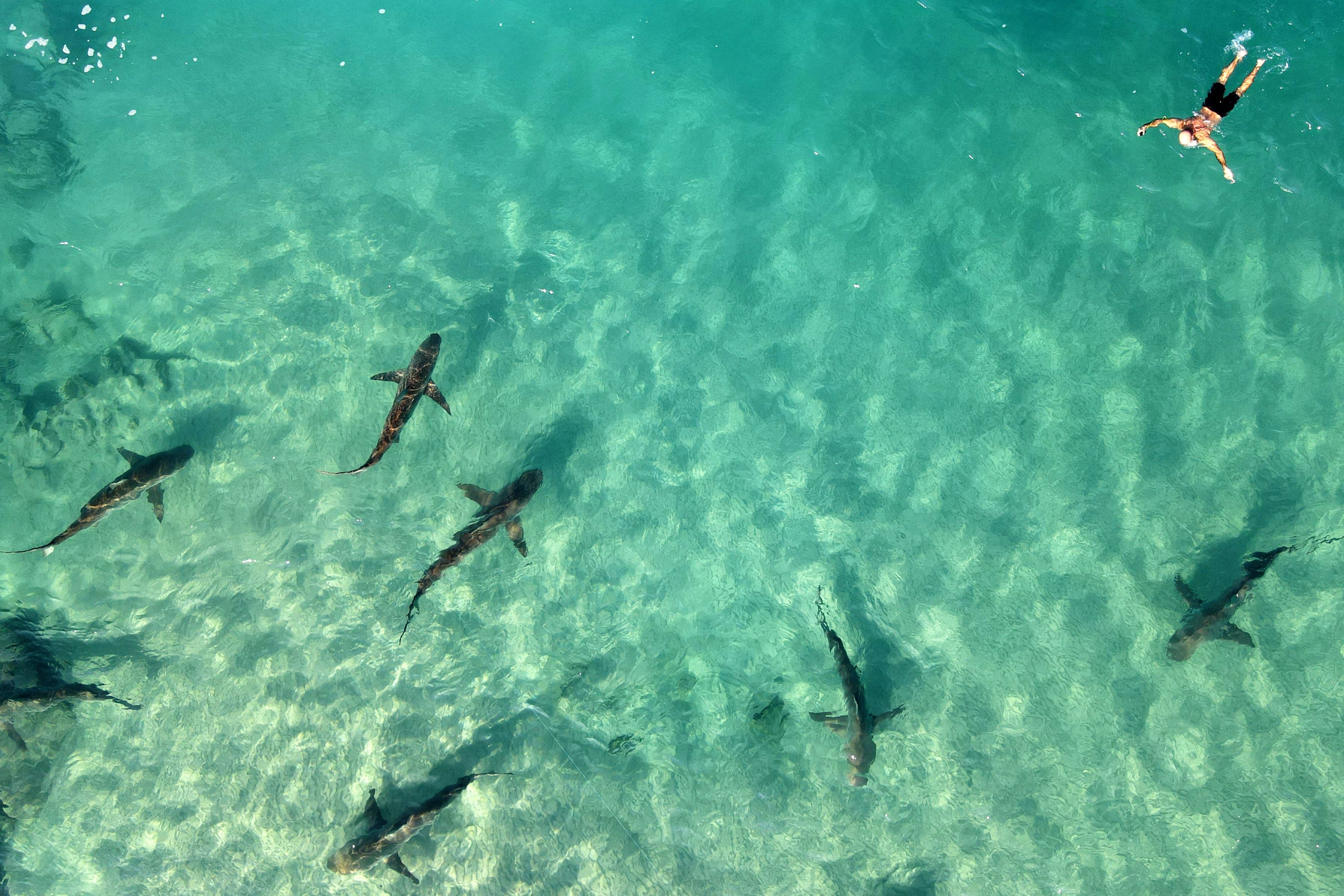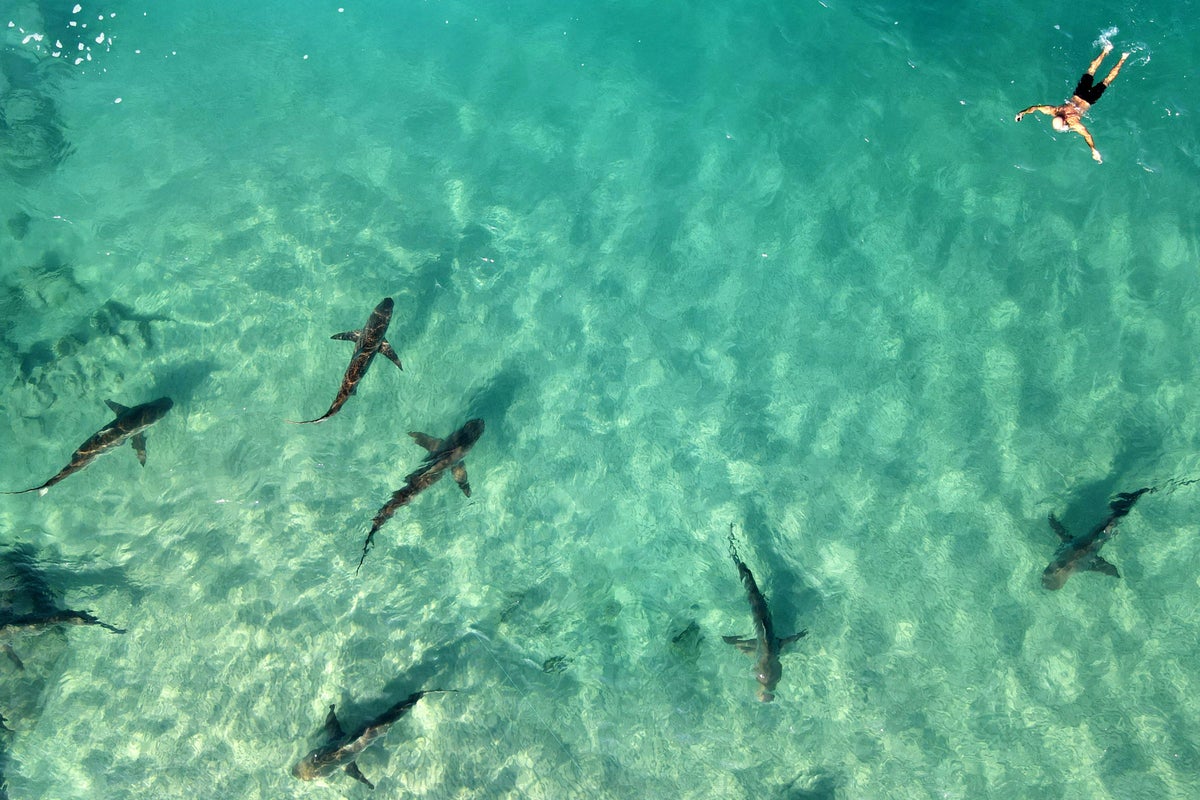Your support helps us to tell the story
From reproductive rights to climate change to Big Tech, The Independent is on the ground when the story is developing. Whether it’s investigating the financials of Elon Musk’s pro-Trump PAC or producing our latest documentary, ‘The A Word’, which shines a light on the American women fighting for reproductive rights, we know how important it is to parse out the facts from the messaging.
At such a critical moment in US history, we need reporters on the ground. Your donation allows us to keep sending journalists to speak to both sides of the story.
The Independent is trusted by Americans across the entire political spectrum. And unlike many other quality news outlets, we choose not to lock Americans out of our reporting and analysis with paywalls. We believe quality journalism should be available to everyone, paid for by those who can afford it.
Your support makes all the difference.Read more
A 40-year-old male tourist was swimming and filming about 100m from shore in Hadera off the coast of Israel in April when he was suddenly surrounded by a shiver of dusky sharks, a species generally considered to be harmless to humans.
Witness testimonies suggest a shark reportedly lunged at his GoPro camera. Witnesses then heard him shouting: “Help…they’re biting me”, before he disappeared from sight as the water turned red and some shark fins could be seen on the surface. By the time rescue boats could arrive, the water was bloodied and the man was gone, local reports say.
“The day after, searches at sea recovered human remains (in very small quantities) that allowed the forensic confirmation of the victim’s identity, but also led to the conclusion that he had been devoured by ‘several’ sharks during this incident,” researchers wrote.
The report, published in the journal Ethology, documents the first known instance of a dusky shark – a species with no known record of killing humans – fatally attacking a diver during a feeding frenzy.
Researchers have pinned the extremely rare attack to a combination of factors, including human error, ecological distortion, and animal instinct amid a feeding frenzy.
While dusky sharks are large and seem like imposing predators, growing to about 3m (10ft) in length, they’re typically shy and wary of people.
 A free-diver swims next to Sandbar sharks in the Mediterranean sea near the northern Israeli coastal city of Hadera. Dozens of Sandbar and Dusky sharks gathered off the coast of northern Israel, where the waters of the Mediterranean are warmer due to the impact of the Orot Rabin power plant (AFP via Getty Images)
A free-diver swims next to Sandbar sharks in the Mediterranean sea near the northern Israeli coastal city of Hadera. Dozens of Sandbar and Dusky sharks gathered off the coast of northern Israel, where the waters of the Mediterranean are warmer due to the impact of the Orot Rabin power plant (AFP via Getty Images)
The sea off Israel’s Hadera has attracted these sharks in droves due to the warm water coming out of the coast’s desalination plants.
In addition, human feeding of these sharks, as well as abundant food waste dumped into the region, has served to attract dusky sharks further, with dozens of them lingering around every winter.
Local boat operators catering to tourists have also thrown fish scraps in these waters to keep the sharks within their vicinity for customers.
These factors together have led the sharks to associate humans with food, and a new behavioural pattern in them called “begging”, scientists explain.
A number of sharks have been documented swimming straight toward divers, sometimes even brushing against them, looking for quick meal handouts.
A careful examination of images taken of the scene revealed that the sharks are likely dusky sharks based on the size and shape of their dorsal fin.
Scientists theorise that the competitive food environment created in these waters have led to the dusky sharks exhibiting a frenzy behaviour at the time of feeding.
“The competition for access to the food resource overrides the species’ usual behaviour, including the intrinsic non-instinctive nature of the (human) prey,” they wrote.
“The situation likely occurred via a process of juxtaposition bites, with two distinct motivations: the first, a (probably single) reflex/clumsiness bite driven by food begging, and the second, several predatory bites triggered by a feeding frenzy,” researchers explain.
Solutions that could be taken to prevent such incidents in the future “are simpler and more effective” than in the case of a classic fatal shark bite from known deadly species like tiger sharks, they say.
“The central objective is to eliminate the begging behaviour in sharks, and this can only be achieved by establishing and enforcing a complete and total ban on all artificial feeding of sharks by the public,” scientists write.
“Any other measure could be complementary, but undeniably less relevant than this approach,” they conclude.
